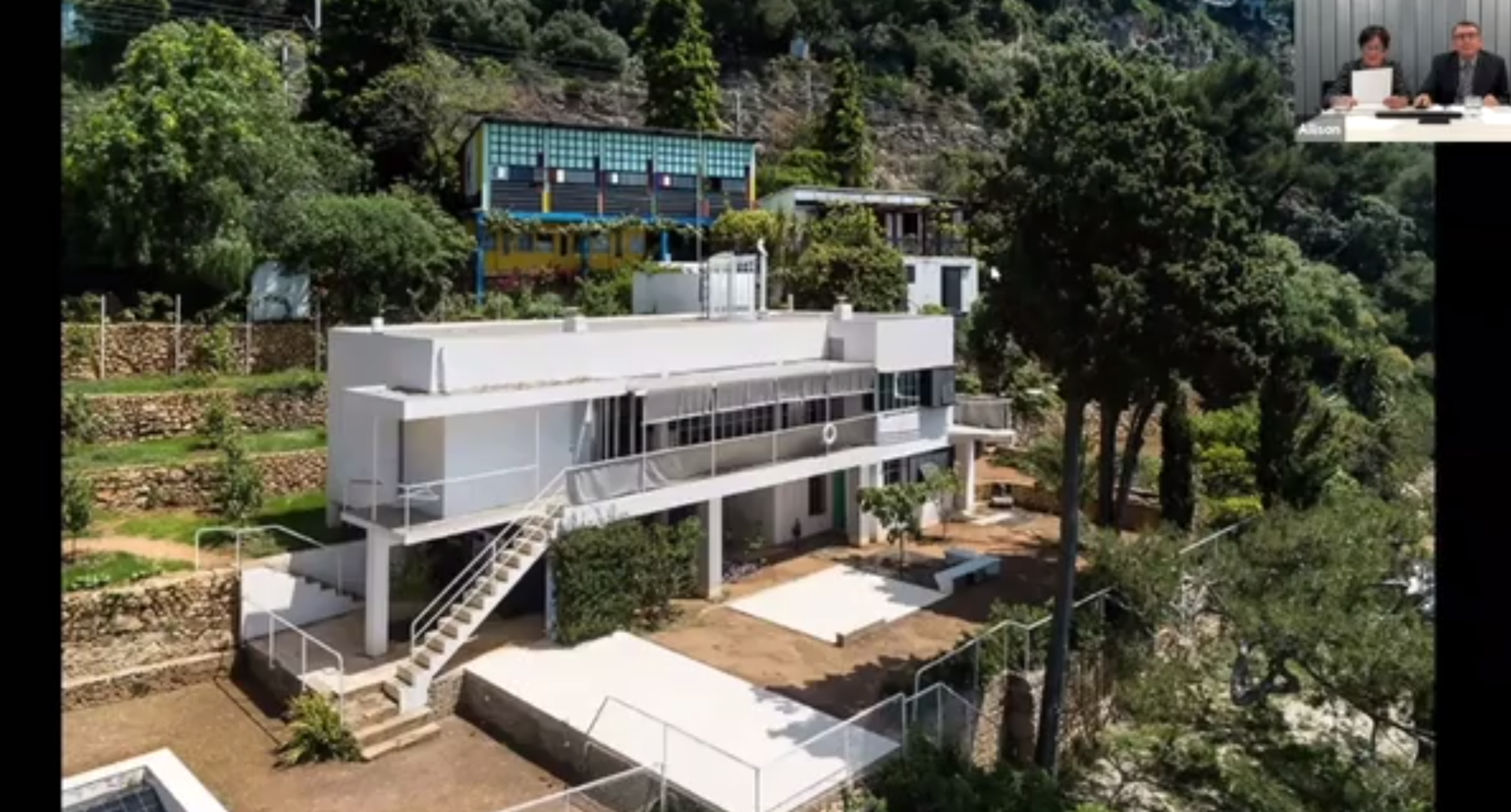Love, Jealousy and Death at the E-1027 House
Photo by Joe Valerio & Linda Searl
Joe Valerio and Linda Searl explore Eileen Gray’s 20th Century Masterpiece on the Cote d’Azur
Irish born Eileen Gray, daughter of Lord Gray and Lady Jane Stewart, moved to Paris in the late 1920s to study art and design. She became a celebrated designer of furniture and decorative arts, particularly intrigued with lacquer, and eventually opened her own shop in Paris. She moved to Cap Martin where she designed a house and landscape for herself and her lover, Jean Badovici, in the International style. The name of the E-1027 House is an anagram using their initials: E is for Eileen, J is the tenth letter in the alphabet, B is the second, and G is the seventh.
Photo by Joe Valerio & Linda Searl
Photo by Joe Valerio & Linda Searl
Valerio and Searl describe what they call “a passion play,” which also involves architect Le Corbusier, one of the 20th century’s most famous architects who spent time in Chicago particularly in the 1930s. He ultimately drowned while swimming off the coast of Cap Martin in 1965.
“Eileen met Le Corbusier through her relationship with Jean Badovici,” they explain. “Gray selected the site in Cap Martin, and built the E-1027 house for her lover, Badovichi. She admired Corbu’s architectural work, such as the Citrohan House, but questioned some of his theories, such as his conviction that ‘a house is a machine for living.’ ”
Gray spent a great deal of time finding the site, overlooking the Cote d’Azur and its beautiful blue waters. It afforded a good deal of privacy, with very few buildings to obstruct its view high above the water.
The house was completed in 1929, though she broke up with Badovici not long afterwards, leaving the house never to return. In 1937, Corbu spent a few days at the house with his wife and Badovici. After the visit he wrote her a letter filled with compliments about the design, acknowledging her as the designer. However, after the war, he became critical of the design in a series of letters to Badovici. During this period academics began to credit Badovici with the design, with the help of Le Corbusier. He never corrected this misrepresentation and appeared to become jealous that a woman could conceive of and build such a masterful piece of architecture.
Photo by Joe Valerio & Linda Searl
Photo by Joe Valerio & Linda Searl
Photo by Joe Valerio & Linda Searl
Sharing what fascinates him most about the story, Valerio says, “The human side is very poignant, especially since Eileen was so independent, brilliant, and one of very few women of this time whose work was so recognized. She clearly was the designer of the house and its contents. She regretted the idea that Jean Badovici would claim the design as his own, and that Le Corbusier would not publicly refute this claim. I have admired her for a long time, and it was a dream come true to be able to visit this house.”
Valerio, a native of Rogers Park who grew up in Wilmette, and Searl live in Ukranian Village and together designed their Ohio Street house. Searl, a partner with Searl Lamaster Howe Architects, was selected by Architectural Digest as one of the best architects and designers of the year 2004.“Our house is a contrast in volumetric forms, distinctly Chicago, both muscular and sculptural,” Valerio says.
To read the whole article from Classic Chicago Magazine, click here.
Watch The Presentation
Original Author
Judy Carmack Bross, Classic Chicago Magazine







